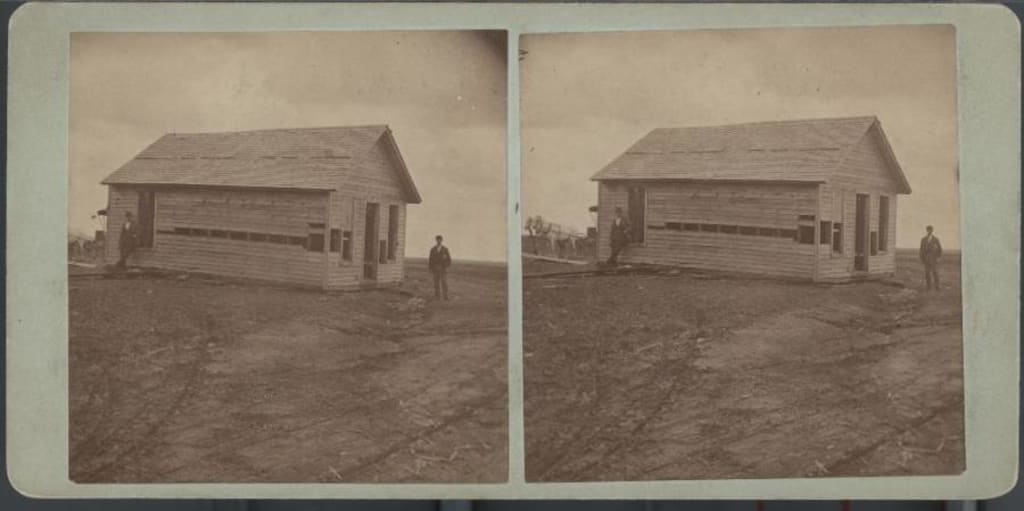
Southeast Kansas had its very own serial killer family -- possibly the first serial killer family of the United States. The Bender family has long been a subject of gruesome lore in the area where I was raised, and over the decades, the interest has never waned. With the advent of websites that share newspaper archives, the depth of knowledge about this bizarre family as well as the spread of conjectures, misinformation, and hypothetical circumstances has only increased the mystery.
The truth is, we had a serial killer family in Southeast Kansas, fitting into history somewhere between the urban legend of Sweeney Todd and the famous serial killer, Jack the Ripper.
At the time, it was labeled “A Tale of Crime Almost Without Parallel” and the family was dubbed “The Bloody Benders” soon after their murdering deeds were unearthed.
The Bender family moved to Cherryvale, Kansas, in 1871 as one of several families of “spiritualists,” taking advantage of land made available when Kansas moved the Osage Indians to the territory that would become Oklahoma. The four Benders claimed 160 acres outside of town and assimilated into the environment.
Ma and Pa Bender spoke little English and were more reclusive, but their children spoke English fluently and provided a social cushion between the family and the culture of the area.
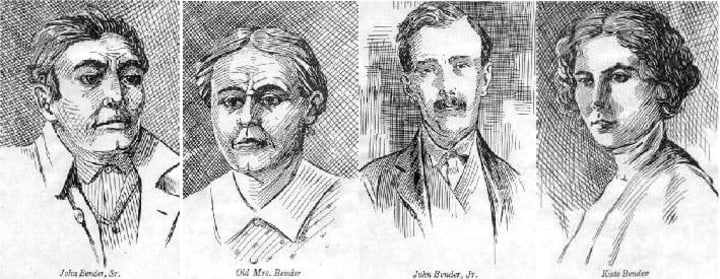
Only two of Ma Bender’s 12 children settled in Cherryvale – John, Jr., and Kate. Ma’s first husband died under mysterious circumstances, as did her other husbands before meeting John Bender. She also reportedly murdered three of her children to avoid their testifying against her. It is likely that they moved to the sparsely populated Southeast Kansas area to avoid the law in another part of the United States.
Why did the children take their mother’s current husband’s last name instead of their birth name? Was it due to convenience or acceptance? That part is unknown.
The Benders built their little cabin and hung a crude “Groceries” sign on the door.
Kate’s beauty and social skills helped keep the visitors entertained and the townspeople disarmed. She claimed to be a psychic healer who “can heal all sorts of diseases; can cure blindness, fits, deafness and all such diseases, also deaf and dumbness,” according to her circular. She held seances in Cherryvale and nearby towns. She also reportedly enjoyed the company of men – for money.
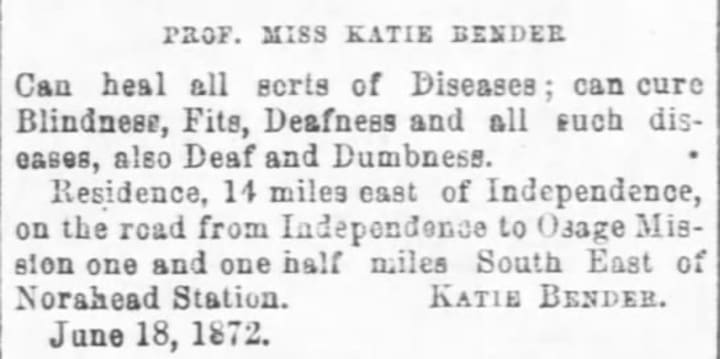
Kate and John Jr. entertained travelers, making them feel welcomed and safe before being bludgeoned to death, robbed, and shoved through a trap door in the floor, to be buried later on their orchard land.
The Benders selected mostly men who traveled alone to rob and kill. The travelers took a seat at a table against a blanket curtain dividing the room and died from blows administered by Pa Bender from the other side of the curtain. Back in that time, it wasn’t that unusual for a person to go missing. People could die easily from the harsh Western United States elements, become lost, be bitten by a poisonous snake, have an accident – any number of reasons for failing to reach their destinations. The Benders counted on those possible circumstances to cloak their murderous deeds.
If the family had continued to kill loners and those with few family members, the killing spree might have continued beyond the two years that they lived in the area, but they became reckless. They killed a man named Longcor and his young daughter who lived in nearby Independence, Kansas, then slaughtered Dr. William York, also of Independence -- the physician brother of a state senator – when he went to the Bender Inn searching for the missing Longcors.
By the time Dr. York disappeared, the rumor mill buzzed with the possibilities of the Benders’ relationship to the missing wayfarers. After one of Dr. York’s search party stopped at the Inn to interview the Benders in 1873, they abandoned their land claim and left town with few belongings besides the bounty of their victims. Several reports claim that their body-count booty amounted to $4600 – well over $100,000 in today’s currency.
After they left, the bodies of 8 people (or 10 or 11 or 12, depending on the source) were found buried on their property.
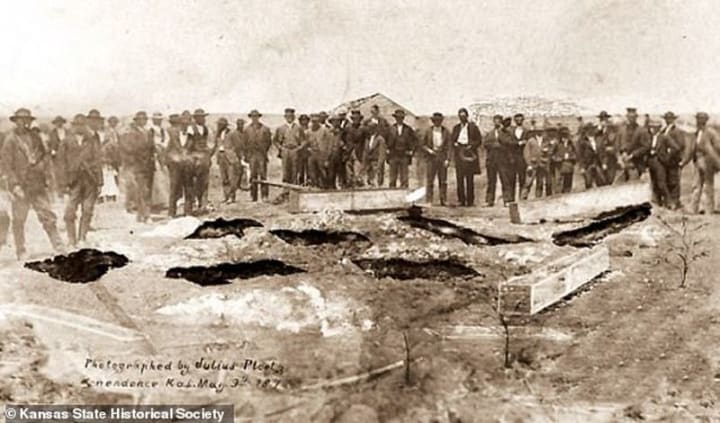
The authorities hunted the Benders for years; reports of their capture appeared in newspapers from 1877 through 1889.
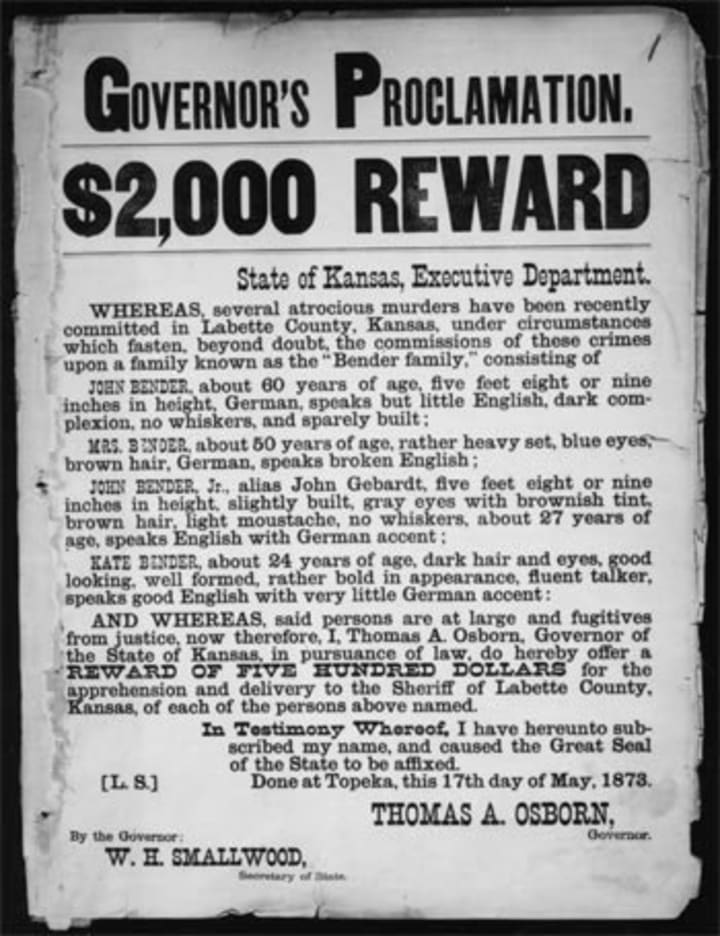
In 1877, they were "caught" in Crawford County under the assumed name of Keafor, according to a telegram from Little Rock, Arkansas. The telegram stated that the family was lynched and buried in a swamp. This account seems the most far-fetched, as Crawford County is only a few miles from their home in Cherryvale, and it doesn't have swamps.
In 1880, a report claimed that “The Benders are dead,” with the arrest of the “McGregor tramps,” said to be members of the Bender family. In 1889, a woman named Mrs. Frances E. McCann of Topeka claimed that the Bender women had taken the names of Mrs. Almira Monroe and her daughter, Mrs. Eliza Davis. They were later released for lack of evidence. Also in 1889, a report surfaced which claimed that the Benders were apprehended shortly after leaving their home, hanged, and “buried so successfully that there is no danger of them ever being found.”
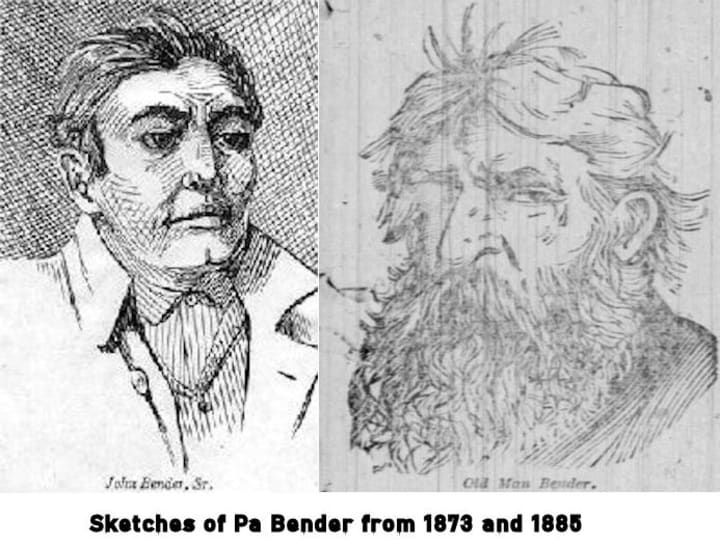
By 1890, the captures, lynchings, hangings, and burials of the Bender family had gotten out of hand. The Mills’ Weekly World of Cherryvale, Kansas, reported, “The Benders have been captured almost every year since their disappearance and as often turned loose.”
The Benders were nicknamed “The Bloody Benders of Labette County” in 1873, and then became just “The Bloody Benders” or "The Bloody Benders of Southeast Kansas" over time. The Cherryvale Museum, created in 1961, documents the history.
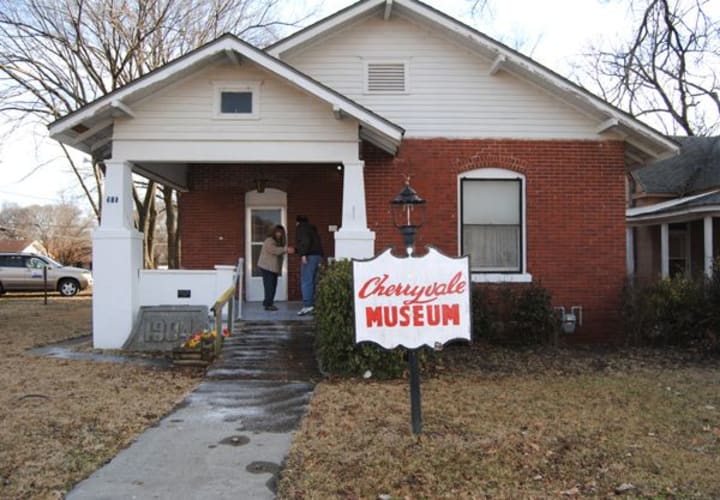
A Kansas historical marker at the junction of U.S. 400 and U.S. 169 tells a brief history of their crimes.
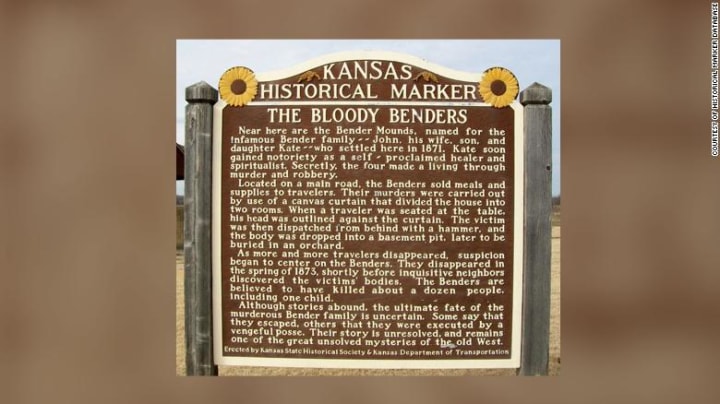
Over the years, the legend continued to hold the fascination of the public. A 2014 segment of “Evil Kin” on The Discovery Channel followed their story; ghosthunters explored the area; several books were written, and a movie called “Bender” with Bruce Davison and Linda Purl hit the theaters in 2016.

In 2020, the land where the Benders committed their crimes went up for auction. It had been used by the previous owners as cropland and was sold as such.
It's been 150 years since their murderous beginning, and it is unlikely that the Benders will ever be forgotten. The mysteries continue to surround the strange family who killed the innocent, and their legacy will never be forgotten.
About the Creator
Cindy Morrison
Writer, ebay-seller, KC Chiefs lover, beader, Kansas Liberal, retired fun person.






Comments
There are no comments for this story
Be the first to respond and start the conversation.